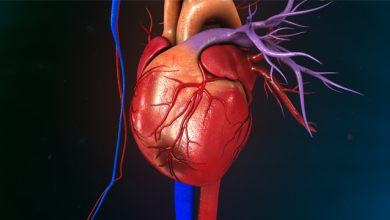Search results
Author(s):
Moritake Iguchi
,
Hiromichi Wada
,
Felipe Martínez
,
et al
Added:
10 months ago
Author(s):
David K Ryan
,
Debasish Banerjee
,
Fadi Jouhra
Added:
1 year ago
Author(s):
Juan Tamargo
Added:
3 years ago
Type 2 diabetes (T2D) remains a major cardiovascular (CV) risk factor1–5 and it confers an approximately two- to threefold fold excess risk for coronary heart disease, including MI, stroke and heart failure (HF) in patients with and in patients without established cardiovascular disease (CVD).1,6–8 The prevalence of T2D among patients with HF is as high as 40–45% and that of HF in patients with…
View more
Author(s):
Felipe Martínez
Added:
3 years ago
Author(s):
Dan Gaiţă
,
Svetlana Moşteoru
,
Laurence S Sperling
Added:
3 years ago
The increasing worldwide prevalence of diabetes mellitus (DM) means almost 360 million people are suffering from this disease (in 2011) and it is estimated to reach 552 million people by 2030.1 The latest European Action on Secondary Prevention by Intervention to Reduce Events (EuroASPIRE) study (2013) has revealed that the mean prevalence of DM in European patients with coronary artery disease …
View more
Author(s):
Giuseppe Galati
,
Pierre Sabouret
,
Olga Germanova
,
et al
Added:
2 years ago
Neuroendocrine System Regulatory Mechanisms: Acute Coronary Syndrome and Stress Hyperglycaemia
Author(s):
Ricardo A Perez de la Hoz
,
Sandra Patricia Swieszkowski
,
Federico Matias Cintora
,
et al
Added:
3 years ago
Article
Author(s):
Aarti Thakkar
,
Anandita Agarwala
,
Erin D Michos
Added:
2 years ago
Author(s):
Bao Tran
,
Gregg C Fonarow
Added:
3 years ago
Heart failure (HF) remains a major public health problem resulting in substantial morbidity, mortality and healthcare expenditures globally. The European Society of Cardiology (ESC) 2012 Guidelines for the Diagnosis and Treatment of Acute and Chronic Heart Failure and the American College of Cardiology Foundation (ACCF)/American Heart Association (AHA) 2013 Guideline for the Management of Heart…
View more
Author(s):
Roland E Schmieder
Added:
3 years ago
The primary goal in the treatment of hypertensive patients is to achieve the maximum possible reduction in the long-term total risk of cardiovascular (CV) and renal morbidity and mortality. In addition to the lowering of blood pressure (BP) per se, successful realisation of the primary goal of treatment also requires appropriate consideration of co-morbidities.1–3 Although there is some…
View more














